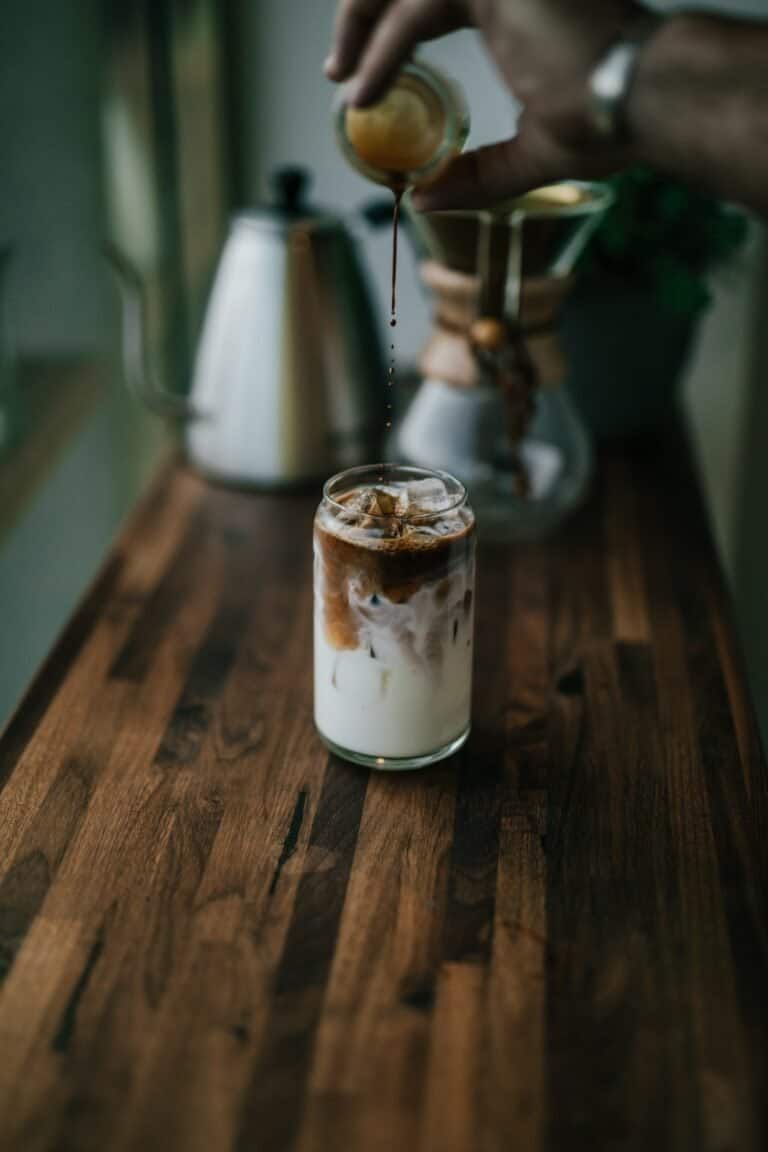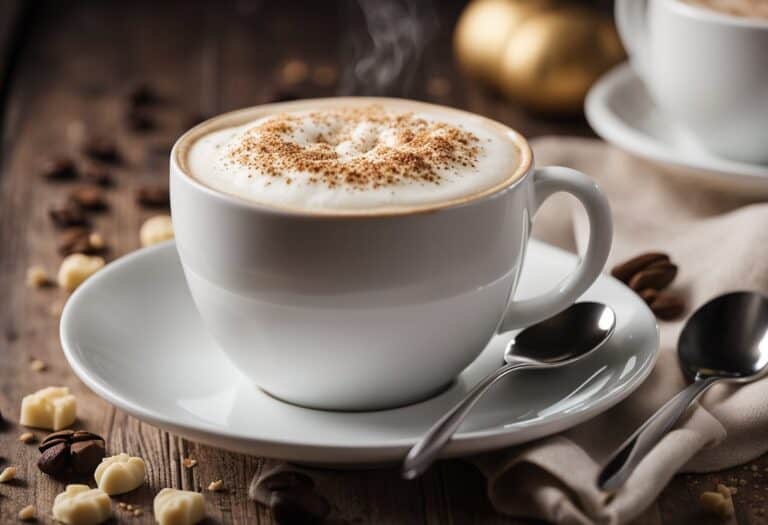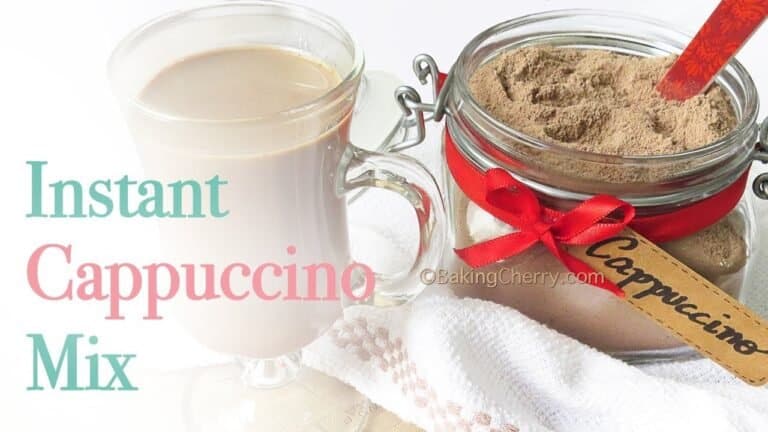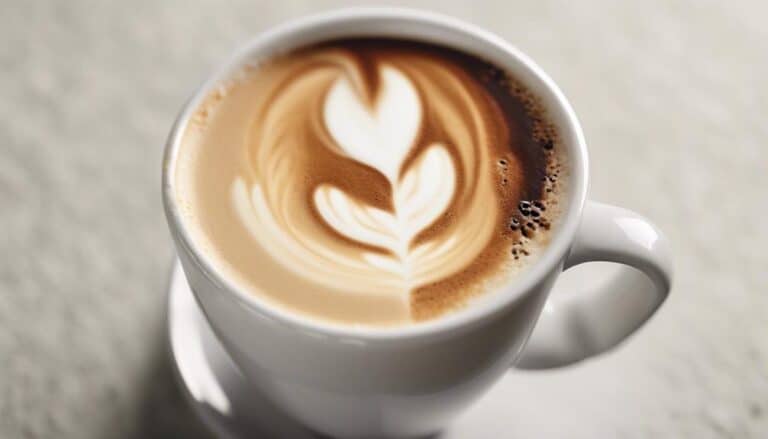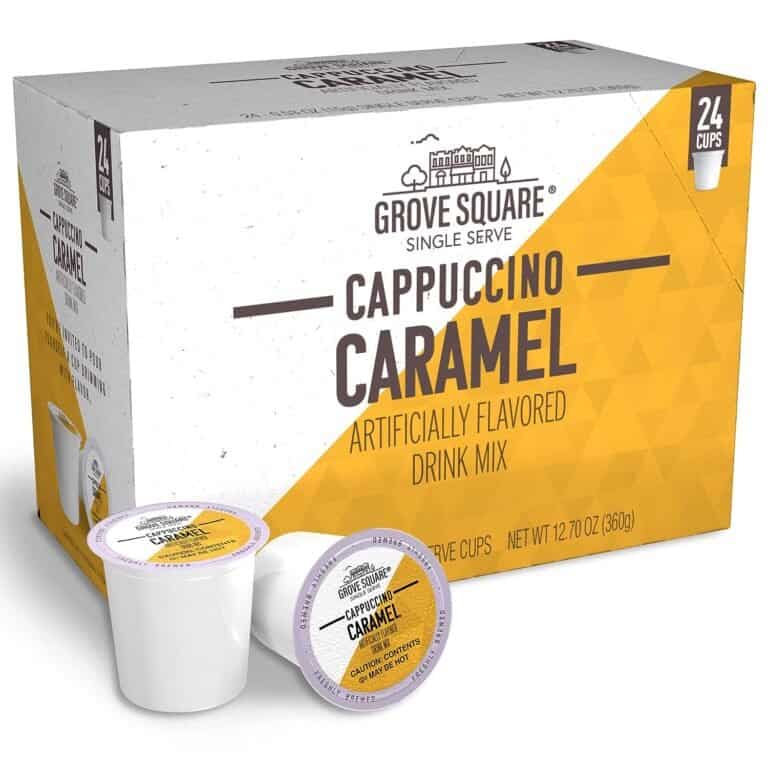Do Cappuccinos Have Caffeine? Here Are 7 Things You Need to Know
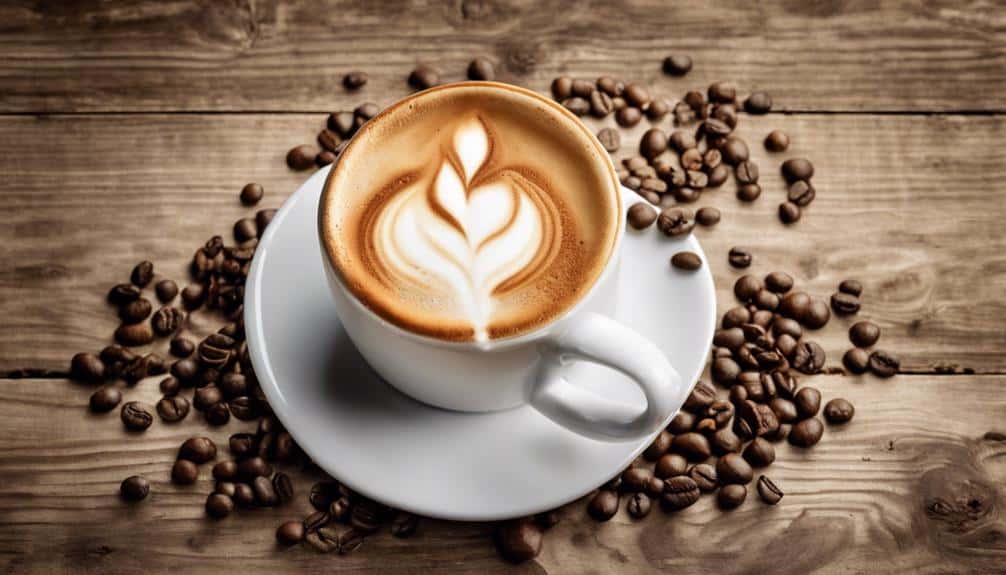
Ever pondered if cappuccinos pack a caffeine punch? Well, here's a hint – they do, but there's more to it than a simple yes or no. Understanding the intricacies of cappuccino caffeine levels can offer a nuanced perspective on this beloved espresso-based drink.
With factors like espresso ratios and foam thickness influencing the caffeine content, exploring the depths of cappuccinos might unveil some surprises.
Want to demystify the caffeine mysteries behind this frothy favorite? Stay tuned for a decaf dose of knowledge on cappuccinos and their caffeine secrets.
Cappuccino: Caffeine Content Overview
Exploring the caffeine content in cappuccinos reveals a fascinating interplay of factors influencing the energizing kick this beloved coffee drink provides. When it comes to the caffeine levels in cappuccinos, it's essential to consider the espresso shots as the primary source. The standard cappuccino typically contains around 85 milligrams of caffeine, but this can fluctuate depending on various variables. The type of coffee beans used plays a crucial role, with dark roast espresso beans packing a more robust flavor along with higher caffeine content.
Moreover, the size of the cappuccino also affects its caffeine concentration. Traditional cappuccinos, with their balanced mix of espresso, steamed milk, and frothy foam, tend to have lower caffeine amounts compared to larger coffee beverages like lattes. Understanding how the milk, espresso shots, and bean type come together in different cup sizes can help coffee enthusiasts make informed choices about their caffeine intake without compromising on the delightful cappuccino experience.
Deciphering Cappuccino's Caffeine Levels
When it comes to deciphering cappuccino's caffeine levels, we can't help but get excited about the intricate details. Understanding the caffeine content comparison between cappuccinos and other coffee beverages gives us a clearer picture of our daily intake.
Factors like the type of beans used and espresso strength play a crucial role in managing our caffeine consumption.
Caffeine Content Comparison
In understanding the caffeine content comparison in cappuccinos, it's crucial to consider factors like espresso strength and cup size to decipher the varying levels accurately. When comparing caffeine levels:
- An 8-ounce cappuccino contains around 63mg of caffeine, while a latte of the same size has about 77mg.
- Caffeine levels in cappuccinos vary based on factors like espresso strength, cup size, and number of shots used.
- Larger cappuccinos tend to have more caffeine due to the increased serving size and espresso content.
- Espresso shots in cappuccinos generally contain between 30-50mg of caffeine, which can vary depending on the coffee beans and brewing method.
- Personal sensitivity to caffeine should be considered when choosing between cappuccinos and other espresso drinks to manage caffeine intake effectively.
Factors Influencing Caffeine Levels
With the intricate interplay of espresso strength, milk content, and cup size, unraveling the nuances of cappuccino's caffeine levels becomes a fascinating journey into the depths of this beloved coffee creation. When considering factors influencing caffeine levels, espresso shots play a crucial role. The milk dilution effect can alter the overall caffeine concentration, impacting the final boost. Larger serving sizes often mean higher caffeine levels, especially in traditional cappuccinos with 2 espresso shots, offering a moderate caffeine kick. Comparing cappuccinos to lattes, the former generally packs equal or slightly more caffeine due to its higher espresso content. Understanding these elements can help coffee enthusiasts tailor their caffeine intake according to their preferences.
| Factors Influencing Caffeine Levels | |
|---|---|
| Espresso Shots | |
| Milk Dilution | |
| Caffeine Concentration | |
| Serving Size | |
| Traditional Cappuccinos |
Managing Caffeine Intake
How can we effectively navigate the intricate landscape of managing caffeine intake when it comes to deciphering the levels present in a cappuccino?
When it comes to managing caffeine intake, especially in the realm of cappuccinos, there are several key strategies to consider:
- Decaf cappuccinos offer a caffeine-reduced option for those seeking to cut back.
- Opting for a smaller-sized cappuccino can help control overall caffeine consumption.
- Enjoy the rich flavors and texture of cappuccino without a strong caffeine kick by choosing the right size.
- Decaffeinated espresso can be used for minimal caffeine content in decaf cappuccinos.
- Consider your personal tolerance and daily limits when deciding how to manage caffeine intake effectively.
Comparing Cappuccino and Latte Caffeine
When comparing the caffeine content of cappuccinos and lattes, it's essential to consider the espresso to milk ratio as a key factor influencing the final caffeine levels in each drink. In a cappuccino, the higher proportion of espresso to milk results in a slightly lower caffeine content compared to a latte, where the milk volume is greater. This difference may seem subtle, but for those mindful of their caffeine intake, it can make a significant impact. Personal caffeine sensitivity also plays a crucial role in deciding between these espresso-based beverages.
Let's break down the caffeine content in a 8-ounce serving of cappuccino and latte:
| Coffee Type | Caffeine Content (per 8 oz) |
|---|---|
| Cappuccino | 63mg |
| Latte | 77mg |
Both cappuccinos and lattes offer a delightful combination of espresso, milk foam, and steamed milk, but the variance in their caffeine levels can influence your choice based on your personal preferences and caffeine tolerance.
Factors Influencing Cappuccino's Caffeine
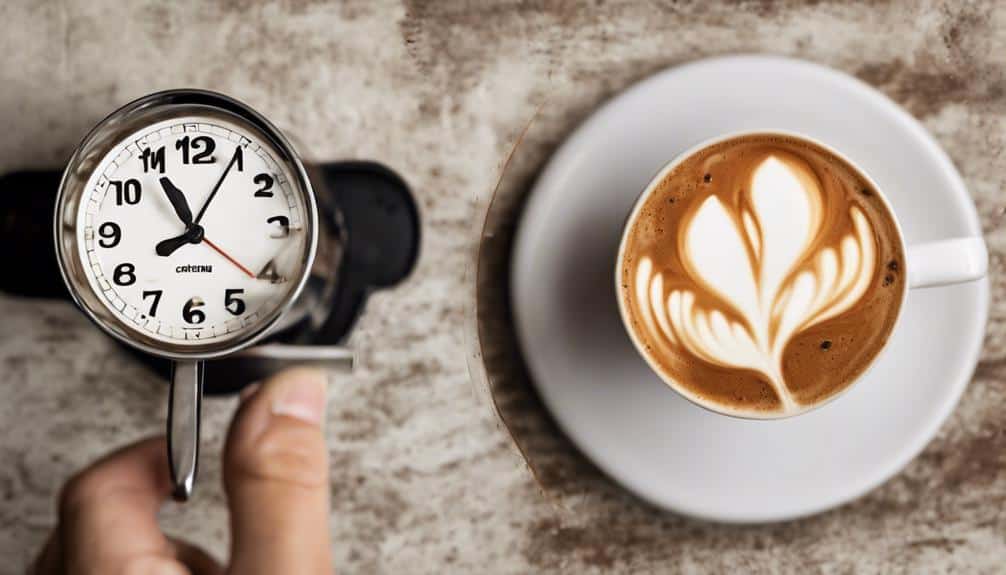
In crafting the perfect cappuccino, the quantity of espresso shots used significantly determines the caffeine content of this beloved espresso-based beverage. When it comes to the caffeine levels in cappuccinos, several factors come into play:
- The amount of caffeine in a traditional cappuccino can range from 40-64 mg with 1 ounce of espresso.
- Opting for a larger cappuccino with 2 espresso shots may increase the caffeine content to 80-128 mg.
- For those seeking an extra kick, a large cappuccino with 3 ounces of espresso can pack 120-192 mg of caffeine.
- Cappuccinos generally edge out lattes in caffeine content due to their higher espresso concentration.
- The balance between milk and foam also impacts caffeine levels, with espresso quantity playing a crucial role in the final caffeine comparison.
Understanding these nuances allows for a more informed choice when selecting your preferred cappuccino based on caffeine preferences.
Art of Crafting Cappuccino Foam
Crafting the perfect cappuccino foam involves mastering the art of steaming and frothing milk to achieve a velvety texture that enhances the overall coffee experience. Baristas utilize specific techniques to aerate the milk, creating a rich and creamy foam that adds a luxurious touch to every sip. The ideal cappuccino foam should have a glossy sheen, signaling that it has been expertly crafted to perfection.
To help you visualize the process of crafting cappuccino foam, here is a breakdown of the key steps involved:
| Steamed Milk | Frothed Milk | Texture |
|---|---|---|
| Aerated | Creamy | Velvety |
| Smooth | Light | Luxurious |
| Glossy Sheen | Rich | Enhances Mouthfeel |
The balance between steamed and frothed milk is crucial in creating a foam that is dense enough to float on the espresso yet light enough to blend seamlessly with the coffee. The result is a cappuccino with a delightful mouthfeel and an enhanced taste that elevates your coffee experience to new heights.
Tailoring Caffeine in Your Cappuccino
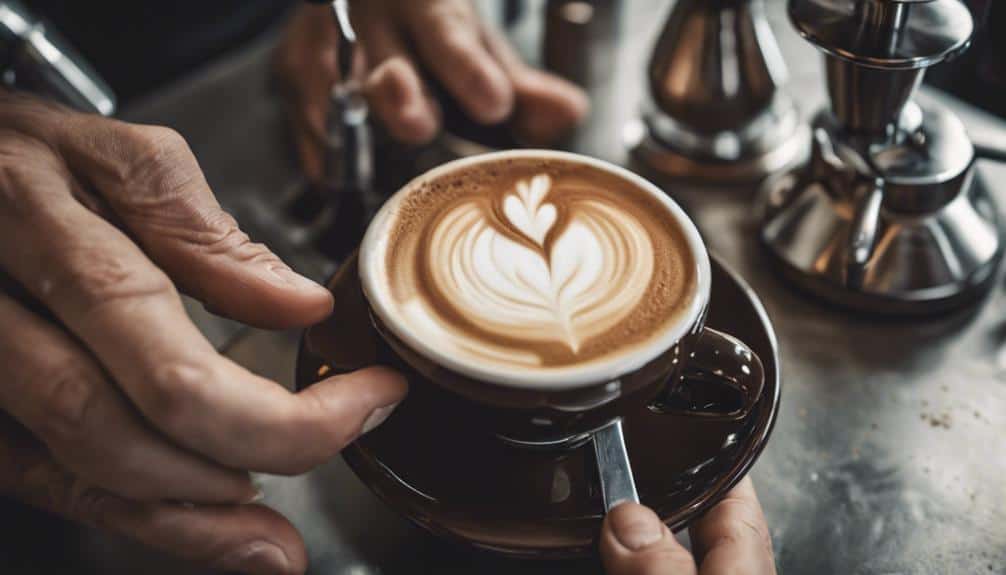
Transitioning from the art of crafting cappuccino foam, let's now explore the tailored approach to adjusting caffeine levels in your cappuccino, allowing for a personalized coffee experience that suits your preferences.
- Decaf Espresso Shots: Swapping regular espresso shots for decaf ones can significantly reduce the caffeine content in your cappuccino.
- Number of Espresso Shots: Controlling the number of espresso shots added to your cappuccino is key to customizing the caffeine levels to your liking.
- Cappuccino Sizes: Opting for smaller cappuccino sizes can help manage your overall caffeine intake while still enjoying this classic drink.
- Decaffeinated Cappuccinos: Choosing decaffeinated cappuccinos ensures you can savor the flavors of a cappuccino without the stimulating effects of caffeine.
- Personalize Your Order: Tailoring your cappuccino order allows you to dictate the caffeine levels based on your preference, providing a bespoke coffee experience that aligns with your taste.
Expert Insights on Cappuccino Caffeine
When it comes to understanding cappuccino caffeine levels, we're here to break it down for you.
Factors like the type of beans used and cup size can influence how much caffeine you're getting.
It's essential to compare these levels across different coffee drinks for a well-rounded perspective.
Caffeine Content Breakdown
Delving into the intricate nuances of cappuccino caffeine content reveals a fascinating interplay of factors that contribute to the coffee's invigorating kick. Here are some key points to consider:
- A standard cappuccino typically contains around 85 milligrams of caffeine.
- The caffeine content can vary based on factors like the type of coffee beans used and the cup size.
- Dark roast espresso provides a bolder flavor with higher caffeine levels.
- Traditional cappuccinos generally have lower caffeine amounts compared to larger coffee beverages like lattes.
- Cappuccinos inherently have more caffeine than lattes or macchiatos due to the higher espresso content.
Understanding these nuances can help coffee enthusiasts make informed decisions when choosing their preferred caffeinated beverage.
Factors Affecting Caffeine Levels
Understanding the intricate factors that influence caffeine levels in cappuccinos provides valuable insights for coffee enthusiasts seeking to appreciate the nuances of their favorite caffeinated beverage. The type of coffee beans, the amount of espresso used, the number of espresso shots, milk content, cup size, and even the choice of decaf espresso all play significant roles in determining the caffeine content of a cappuccino.
Espresso shots typically contain between 30-50mg of caffeine each, and the milk in a cappuccino can dilute this caffeine content. Larger cappuccinos, with more espresso shots and a bigger cup size, tend to have higher caffeine levels. By adjusting the amount of espresso used or opting for decaf espresso, it's possible to tweak the caffeine content of a cappuccino to suit individual preferences.
Comparing Caffeine in Drinks
Exploring the intricate nuances of caffeine content in various coffee drinks unveils a world of expertise and insight, particularly when focusing on cappuccinos. When comparing caffeine levels in drinks like cappuccinos and lattes, the strength of espresso and milk ratio play crucial roles. Here are key points to consider:
- A standard 8-ounce cappuccino contains about 63mg of caffeine from one espresso shot.
- In contrast, a latte of the same size typically has around 77mg of caffeine due to more milk content.
- Cappuccinos offer a quicker caffeine boost than lattes due to their higher espresso to milk ratio.
- Factors like cup size and the number of espresso shots greatly influence caffeine levels in cappuccinos.
Conclusion
In conclusion, cappuccinos do indeed contain caffeine, with an average of around 85mg in a 150ml serving. Understanding the factors that influence caffeine content in cappuccinos, such as the amount of espresso used and the size of the beverage, can help you tailor your drink to your desired caffeine level.
Whether you prefer a strong kick of caffeine or a milder pick-me-up, cappuccinos offer a delicious way to enjoy your daily dose of caffeine.
